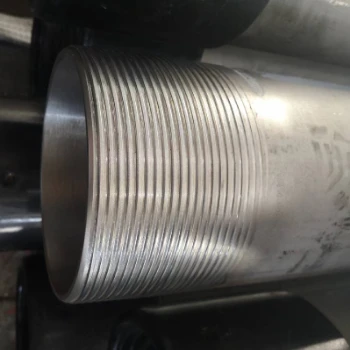- Afrikaans
- Albanian
- Amharic
- Arabic
- Armenian
- Azerbaijani
- Basque
- Belarusian
- Bengali
- Bosnian
- Bulgarian
- Catalan
- Cebuano
- Corsican
- Croatian
- Czech
- Danish
- Dutch
- English
- Esperanto
- Estonian
- Finnish
- French
- Frisian
- Galician
- Georgian
- German
- Greek
- Gujarati
- Haitian Creole
- hausa
- hawaiian
- Hebrew
- Hindi
- Miao
- Hungarian
- Icelandic
- igbo
- Indonesian
- irish
- Italian
- Japanese
- Javanese
- Kannada
- kazakh
- Khmer
- Rwandese
- Korean
- Kurdish
- Kyrgyz
- Lao
- Latin
- Latvian
- Lithuanian
- Luxembourgish
- Macedonian
- Malgashi
- Malay
- Malayalam
- Maltese
- Maori
- Marathi
- Mongolian
- Myanmar
- Nepali
- Norwegian
- Norwegian
- Occitan
- Pashto
- Persian
- Polish
- Portuguese
- Punjabi
- Romanian
- Russian
- Samoan
- Scottish Gaelic
- Serbian
- Sesotho
- Shona
- Sindhi
- Sinhala
- Slovak
- Slovenian
- Somali
- Spanish
- Sundanese
- Swahili
- Swedish
- Tagalog
- Tajik
- Tamil
- Tatar
- Telugu
- Thai
- Turkish
- Turkmen
- Ukrainian
- Urdu
- Uighur
- Uzbek
- Vietnamese
- Welsh
- Bantu
- Yiddish
- Yoruba
- Zulu
casing pup joint
Understanding Casing Pup Joints A Key Component in the Oil and Gas Industry
In the oil and gas industry, casing pup joints are a crucial component that ensures the efficiency and safety of drilling operations. These short lengths of pipe, typically ranging from 2 to 10 feet in length, are used in various applications, most commonly for adjusting the length of casing or providing flexibility in the design of well completion. This article aims to provide an overview of casing pup joints, their applications, manufacturing processes, and their significance in drilling operations.
What Are Casing Pup Joints?
Casing pup joints are specialized tubular components used in oil and gas well construction. They are typically made from the same materials as casing pipes, which are designed to withstand high pressures and corrosive environments encountered during drilling. The joints can be manufactured in various sizes and grades to meet specific operational requirements. Despite their relatively short length, pup joints play a significant role in enhancing the drilling and completion processes.
Applications of Casing Pup Joints
The primary function of casing pup joints is to connect segments of casing together to create a complete and continuous casing string
. They are particularly useful in the following scenarios1. Length Adjustments When operators need to adjust the total length of the casing string to meet specific depth requirements, casing pup joints provide an effective solution. They allow for precise sizing and fitting of the casing without the need to manufacture or transport longer sections of pipe.
2. Wellhead Connection Pup joints are often used to connect the casing to the wellhead, facilitating pressure control and containment in the production phase. This connection is critical for maintaining the integrity of the well and ensuring safe operations.
3. Flexibility in Design During the planning and execution of drilling operations, flexibility is essential. Casing pup joints enable engineers to design and modify well completions while accommodating various geological conditions and operational challenges.
casing pup joint

4. Secondary Applications Beyond connecting casing sections, pup joints can be utilized for various secondary applications, including tubing transitions, installation of downhole tools, and facilitating the use of production equipment.
Manufacturing of Casing Pup Joints
The manufacturing process of casing pup joints involves several steps to ensure the final product meets industry standards for quality and performance. The typical process includes
1. Material Selection High-strength steel alloys are often chosen for their durability and resistance to wear and corrosion. The selection of material is pivotal to the performance and lifespan of the pup joints.
2. Cutting and Forming The raw material is cut to the desired length and then formed into pipes. This may involve processes like extrusion, welding, or forging, depending on the specifications required.
3. Threading and Finishing Once the pipe is shaped, threading is applied to both ends to facilitate easy connection to other casing components. Finishing processes, including coating and inspection, ensure the joints meet industry standards for safety and efficacy.
Conclusion
Casing pup joints are indispensable elements in the oil and gas sector that enhance operational efficiency and safety during drilling and completion activities. Their ability to adjust lengths, provide flexibility, and facilitate secure connections makes them vital for effective well construction. As the industry continues to evolve and face new challenges, the importance of high-quality casing pup joints will only increase, ensuring that they remain at the forefront of safe and efficient oil and gas extraction practices. Understanding the role and functionality of these components serves as a reminder of the intricate details involved in the complex world of drilling operations.
-
Tubing Pup Joints: Essential Components for Oil and Gas OperationsNewsJul.10,2025
-
Pup Joints: Essential Components for Reliable Drilling OperationsNewsJul.10,2025
-
Pipe Couplings: Connecting Your World EfficientlyNewsJul.10,2025
-
Mastering Oilfield Operations with Quality Tubing and CasingNewsJul.10,2025
-
High-Quality Casing Couplings for Every NeedNewsJul.10,2025
-
Boost Your Drilling Efficiency with Premium Crossover Tools & Seating NipplesNewsJul.10,2025







